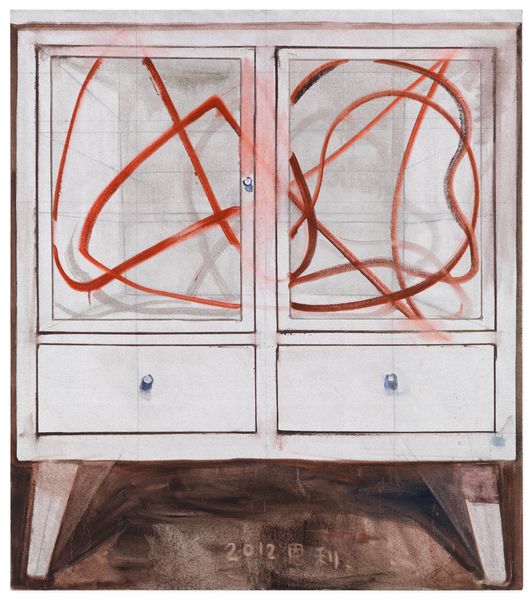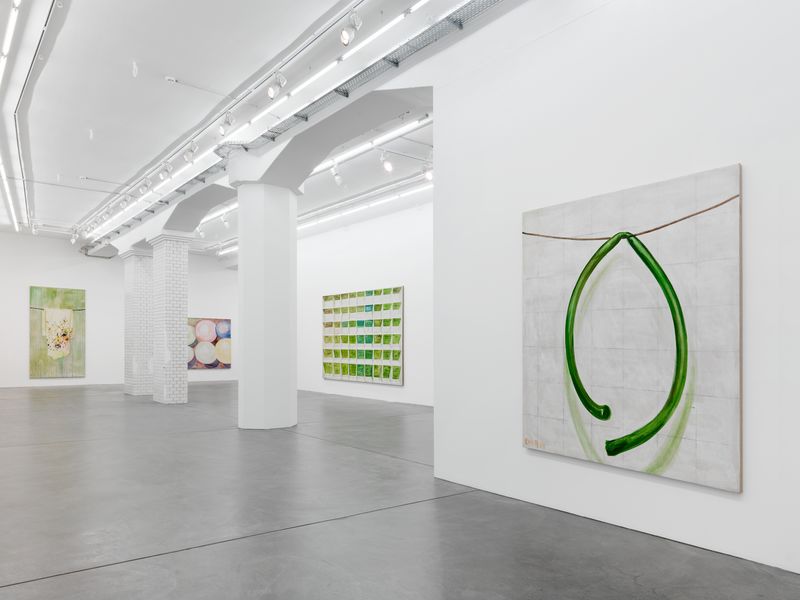
Zhang Enli
Topology
27 October - 22 December 2012
Zürich
Zhang Enli is known for his subdued paintings of ordinary objects: pipes and hoses, empty shelves, tiled walls and tangled wires. Yet through his skillful treatment of the medium, these seemingly objective depictions of everyday items transform into captivating portraits that redefine the meaning and interpretation of their subject. For his first exhibition in Switzerland since his critically acclaimed solo presentation at Kunsthalle Bern in 2009, Zhang Enli will present 'Topology' at Hauser & Wirth Zürich, featuring 20 new large-scale paintings.
Set against a neutral background or, in the case of 'The Wire (2)', the sloping perspective of a yellow and blue striped floor, simple, black wires come alive on Zhang Enli's new canvases as they unravel and dance across the picture plane. These works combine Zhang Enli's characteristic handling of paint – a series of thin applications that are left to bleed across the surface of the canvas – with a new-found confidence evidenced in the fluidity and lyricism of his lines.
The undulating curves and twisting shapes of the wire are sharply contrasted by the superimposed rigid grid, which divides the canvas up into calculated segments as a painting aid. The conspicuousness of the grid removes these works from the European still-life tradition of mimesis and instead embraces the act of painting.
Zhang Enli's 'Cargo' series presents a significant departure from his previous works. Each painting depicts a heaving bulk of cargo in a white cover, held down by a tangle of netting. The cargo fills the space of the canvas with its imposing mass, pushing through the ropes that contain it. Unlike his previous works that feature commonplace objects easily recognisable to any viewer, Zhang Enli gives no intimation as to what is concealed beneath the cover. However, similar to his earlier paintings, these works are completely removed of any context. The viewer is left to guess if the cargo they are seeing has just arrived, or is preparing to depart. It is this state of uncertainty and this world of perpetual flux that has captivated Zhang Enli for many years, and continues to do so today.
Selected images

The History
2012

The Red Pipe
2012

The Heating
2012

The White Light
2012

The Color Balls
2012

A Roll of Wires
2012

The Rubber Pipe
2012

Six Balls
2012

Seven Nail Holes
2012

A Roll of Wires
2012

The Globe
2012

The Pattern
2012

The Cargo
2012

The Cargo (2)
2012

The Cargo (3)
2012

The Wire (1)
2012

The Wire (2)
2012
Installation views


About the Artist

Zhang Enli
「有時,那些被遮蔽的東西也會隨著時間的流逝而留下痕跡。而這正是我近期抽象繪畫的源頭。當我去看一面牆或是天空的時候,上面其實充滿了痕跡,而我便會以某人之名為這些痕跡命名;這變得非常有趣,因為它既是可見的,又是不可見的。」
——張恩利
Current Exhibitions
1 / 12














